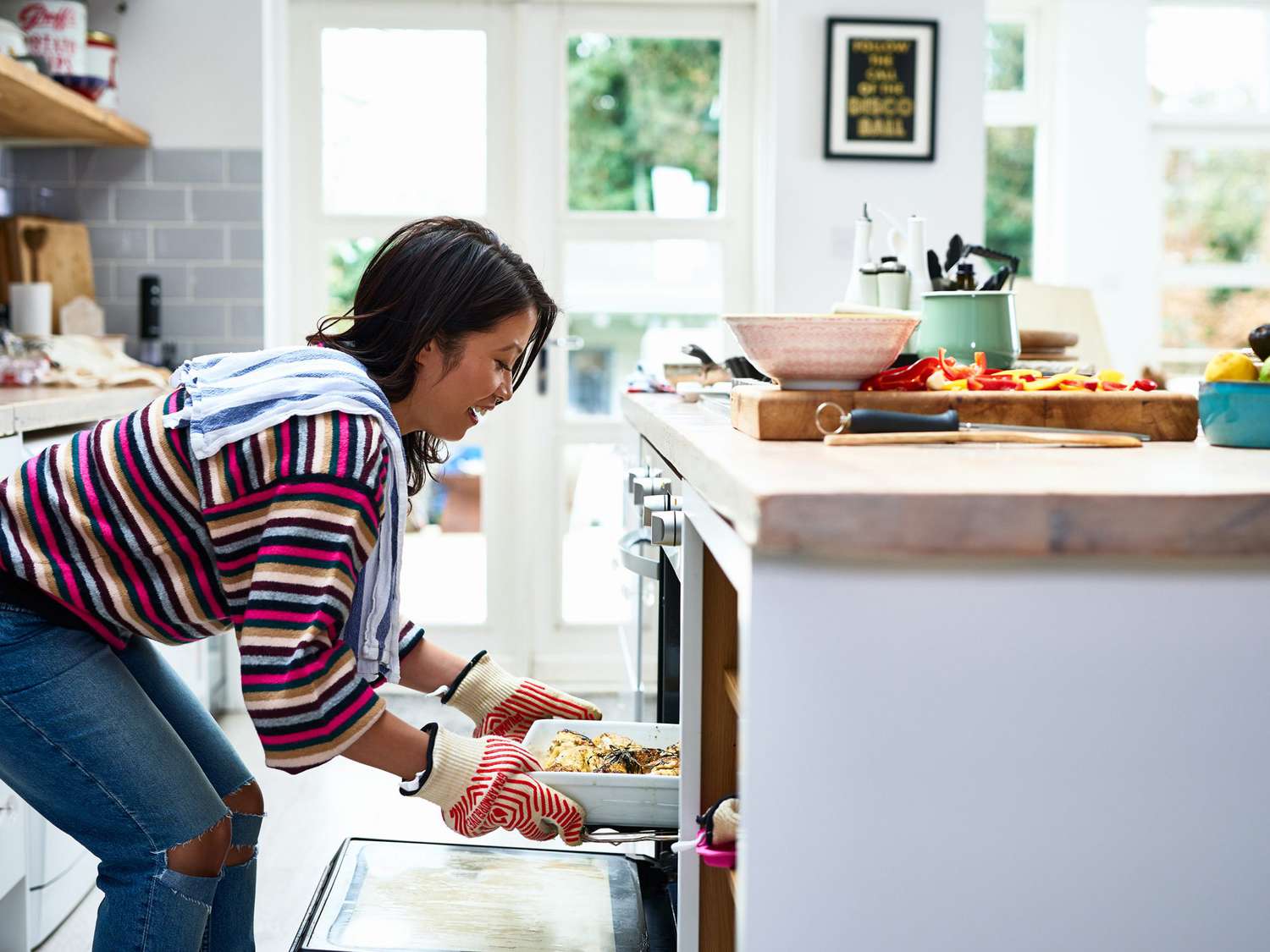
It’s roasting season, which means your kitchen’s biggest energy user, the oven, is working overtime to crisp vegetables, slow-roast beef, bake cookies, and more. Why not make the most of all that space (and all that energy) by cooking multiple dishes together? You can create one big meal in less time or get ahead for the week by getting the most time-consuming components out of the way. Follow these tips and temperature guidelines for maximizing your oven’s output every time you turn it on. Your future self—and your energy bill—will thank you.
Tips for Cooking Multiple Dishes in Your Oven
Don’t Trust That Dial
The display on your oven isn’t always accurate and shifts up or down depending on how full your oven is or how long you leave your oven door open. Get a cheap oven thermometer to tell you the true temperature and adjust as needed.
Leave Some Room
Allow a couple of inches for air to circulate between the dishes and between the dishes and the walls of your oven. This helps everything cook more evenly. Sheet pans should sit completely flat so that any dripping juices don’t cause smoke or grease fires.
Match the Food to the Dish
Use pans and baking dishes that are the same size as the food you’re cooking (not much bigger or smaller) so you don’t lose oven real estate and your food has room to get nicely browned.
Meet in the Middle
If one dish calls for a roasting temp of 325 degrees F (165 degrees C) and another calls for 375 degrees F (190 degrees C), you can meet in the middle and cook both at 350 degrees F (175 degrees C). Most ovens are usually off by about 25 degrees, so both should be fine. The exception is baked goods, which do require a specific temperature.
Do a Dry Run
While the oven is off, place the empty dishes you plan to use inside so you know what can fit where (with room in between) and what racks to move. Dishes that won’t suffer from extra crisping on the bottom should go on the lowest rack. Those that can stand to get more browned on top should go above.
What to Cook Together at Each Temperature
300 Degrees F (150 Degrees C)
This temp is perfect for drying out airy whipped egg whites in an Easy Pavlova and for slowly braising tough cuts of meat like a classic Pot Roast (keep the lid on the pot to avoid crossover smells). You can also gently roast tomatoes or bake apple slices for chips.
350 Degrees F (175 Degrees C)
This temp is most common because it’s just high enough for browning but not high enough to quickly burn what you’re cooking or baking. It holds true for Award-Winning Soft Chocolate Chip Cookies, as well as Broccoli Casserole, or a simple roast chicken.
400 Degrees F (200 Degrees C)
Fish and vegetables love this temperature. Use it for Parchment Baked Salmon or any similar fish fillets (start checking for doneness after 10 minutes). Roast cut vegetables, flipping halfway through for even browning. Wrap whole garlic heads in foil for Roasted Garlic. Do the same for whole beets and sweet potatoes.
450 Degrees F (230 Degrees C)
The blast of heat at this temp creates a crunchy crust on breads and pizzas like this Brick-Oven Pizza (Brooklyn Style). It also gives you the ultimate crispy edges on these Roasted Rosemary Onion Potatoes. Use caution at this temp: Turn on your exhaust fan and have oven mitts at the ready.
Related Content:
